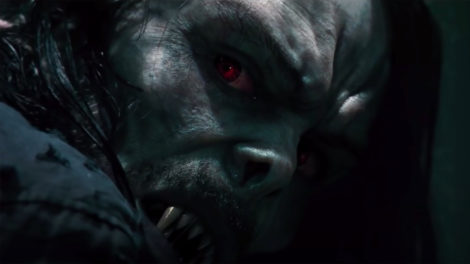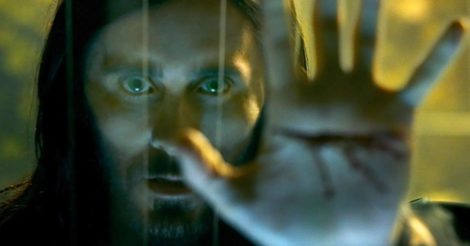Morbius
Front Row at the Movies by Shirrel Rhoades
[mr_rating_result]Back in 1971, the Comics Code censorship rules loosened up. This allowed vampires and other monsters to appear in comics again. Stan Lee quickly assigned Roy Thomas and Gil Kane to create such a character to pit against Spider-Man.
They came up with Morbius, the Living Vampire.
 The pitch: In trying to cure himself of a rare blood disease, biochemist Michael Morbius accidentally turns himself into a pseudo-vampire, a creature with super strength, night vision, sonar, and the need to feast on human flesh.
The pitch: In trying to cure himself of a rare blood disease, biochemist Michael Morbius accidentally turns himself into a pseudo-vampire, a creature with super strength, night vision, sonar, and the need to feast on human flesh.
When I was publisher of Marvel Comics, I featured Morbius in a one-shot edition of “Strange Tales: Dark Corners #1” (May 1998).
Now Sony has spun off a movie called “Morbius” as part of its Spider-Man Universe. This is a shared universe produced by Columbia Pictures in association with Marvel Entertainment. The film just opened in theaters after several delays due to Covid-19.
Jared Leto (Oscar-winner for “Dallas Buyers’ Club”) takes on the eponymous lead as Michael Morbius. You just saw Leto in “House of Gucci” with Lady Gaga. And currently you can find him opposite Anne Hathaway in “WeCrashed” on Apple+. He’s done the comic book thing before, starring as The Joker in Warner Bros.’ “Suicide Squad” and “Zack Snyder’s Justice League.”
In “Morbius,” Leto’s co-star is Adria Arjona, a Puerto Rican actress you’ve seen in “Emerald City” and “6 Underground.” Here, she is cast as Michael Morbius’s fiancée, a brainy scientist.
British actor Matt Smith (the eleventh incarnation of “Dr. Who,” and Prince Phillip in TV’s “The Crown”) portrays Milo, a fellow transgenic vampire who serves as the bad guy in this storyline.
Al Madrigal and Tyrese Gibson play FBI agents hunting Morbius.
 And Michael Keaton (“Batman,” “Birdman”) reprises the role of Vulture from “Spider-Man: Homecoming.” That’s a big plus.
And Michael Keaton (“Batman,” “Birdman”) reprises the role of Vulture from “Spider-Man: Homecoming.” That’s a big plus.
Vampires are one of the most popular mythical beings in pop culture. They share a common set of traits: Undead but immortal, endowed with super strength, the ability to shape-shift, and an erotic sensibility.
In Bela Lugosi’s “Dracula” (1931), Christopher Lee’s “Horror of Dracula” (1958) or Max Schreck’s “Nosferatu” (1922), all of them are portrayed as horrifying blood-suckers with long black capes.
However, current vampires are much more sexual … and disconnected from religion. They no longer fear crosses, holy water, or garlic. Today’s vampires are portrayed in a more sympathetic light, as in the romantic “Twilight” films or TV’s “True Blood” where good vampires battle evil and drink artificial blood.
According to Erin Collopy of Texas Tech University, the reason vampires have gained so much popularity in contemporary culture is because they are a metaphor for people’s own desires and anxieties. Vampires were first sexualized to strike fear into people of the taboo and sinfulness of sexual behavior, but later, this sexualization came to represent repressed desires.
Jerrold E. Hogle, a professor at the University of Arizona, takes a slightly different viewpoint. He says the vampire persona has been appropriated as a symbol of society’s fears, anxieties and conflicts. In short, we love to scare ourselves. Being afraid reminds us that we are alive.
“Morbius” straddles these themes. He was definitely a scary villain when first introduced as an antagonist to Spider-Man. But over the years, his role changed, turning him into more of an antihero in the comics.
But truth be told, he’s just another super hero.
Email Shirrel: srhoades@aol.com


Ratings & Comments
[mr_rating_form]